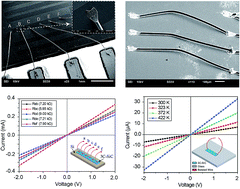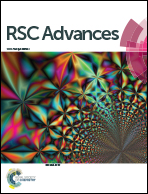A rapid and cost-effective metallization technique for 3C–SiC MEMS using direct wire bonding
Abstract
This paper presents a simple, rapid and cost-effective wire bonding technique for single crystalline silicon carbide (3C–SiC) MEMS devices. Utilizing direct ultrasonic wedge–wedge bonding, we have demonstrated for the first time the direct bonding of aluminum wires onto SiC films for the characterization of electronic devices without the requirement for any metal deposition and etching process. The bonded joints between the Al wires and the SiC surfaces showed a relatively strong adhesion force up to approximately 12.6–14.5 mN and excellent ohmic contact. The bonded wire can withstand high temperatures above 420 K, while maintaining a notable ohmic contact. As a proof of concept, a 3C–SiC strain sensor was demonstrated, where the sensing element was developed based on the piezoresistive effect in SiC and the electrical contact was formed by the proposed direct-bonding technique. The SiC strain sensor possesses high sensitivity to the applied mechanical strains, as well as exceptional repeatability. The work reported here indicates the potential of an extremely simple direct wire bonding method for SiC for MEMS and microelectronic applications.



 Please wait while we load your content...
Please wait while we load your content...